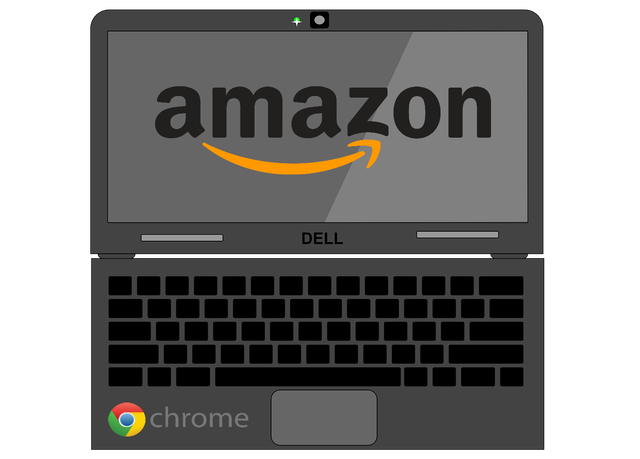The Accidental BYOD Solution

By: Tony DePrato | Follow me on Twitter @tdeprato
After reading Patrick’s recent post about iPads and Chromebooks, I decided to wrap-up an article that follows along those same lines.
The problem is, right now, (and how do I put this) our options for EdTech SUCK!
In 2008, I would have said Apple is the best solution for any school or family that could afford the platform. Then Apple started to change. I think it could be argued, they quietly have abandoned the education market.
iPads are awful devices. Aside from oddly developed apps like Swift Playgrounds, iPad learning falls into two categories:
- Consumer Consumption
- Make it the way the App Says
There is no ability for students to go beyond the rules of the iPad, to change the rules of the iPad, or to create anything that was not predicted.
Microsoft has made amazing strides recently, and I do like their products. Not laptops running Windows. Specifically, I like Microsoft products such as the Surface. However, the Surface products are too expensive, and there is still massive security issues involved in running Microsoft products. The Microsoft hardware does not reflect the actual cost of ownership, when much of that cost is used for defending the organizational ecosystem.
The rest of the market is too fragmented to build a stable platform. Unless a school directs students to only by a specific make a model every year (and every year it will change) there is no hope to establish a level playing field with BYOD students.
But. Maybe there is hope. An unplanned, and possibly accidental partnership. Chromebook + Amazon.
Google has been a big education player for some time. Overall, their services and branded hardware are dependable and flexible. The hardware changes often, but the Chrome OS is consistent.
Chrome OS is a solution for any school that has reliable internet access. Therefore, Chromebooks make a great hardware platform for such schools. Chromebooks have some reasonable opposition among many EdTech leaders:
- The platform cannot run powerful applications like Photoshop, Video Editing Packages, Etc.
- The platform is slow when working outside the core Google products
- Chromebooks have one official browser, and are not fully compatible with all websites/applications
- Although it is possible to code and create software on a Chromebook, the development options are lacking those of a traditional laptop (This is important for schools developing computer science and/or app development curricula.)
What if these four issues, were eliminated? Would the Chromebook be a better choice for most BYOD families or for schools buying hardware for students?
Enter Amazon Workspaces.
I tested Amazon Windows 10 Workspaces last year. I liked the experience, but had no reason to use the service. However, it occurred to me if Amazon Workspaces supported Chrome OS, then I could create a flexible platform for BYOD that used Chromebooks.
Guess what? There is a Workspaces Client and App for Chrome OS.

I have tested this platform for 6 weeks now using the new Samsung Chromebook and an Apple Laptop. I wanted to compare the performance of the Workspace’s Client service on two hardware platforms. Here is what I have found:
All four issues above were resolved. I even installed Photoshop and used it at the office.
Google + Amazon is a great concept for BYOD for education. The problem is, no one at Google or Amazon has realized it yet. This means the concept is not easy to implement at scale.
Although Chrome OS is free, Workspaces is not free. They do have a very affordable educational package. However, the entire process of getting signed-up, and calculating the price, is very convoluted. Amazon for Business is mature. Amazon for education seems like a discount coupon, not a well directed initiative.
The next issue is setting up management for the Workspaces. The cost of doing this at scale is currently not clear. The cost is clear online, but the actual bills do not match the flat rates. I constantly ask for my costs to be explained. I send scenarios to people at Amazon to get pricing, and then I wait for the bill. The bill never matches the predictions.
This is only part one of this research and possible new BYOD model. I am close to having what I would consider an affordable and reasonable deployment model for Workspaces with Chromebooks.
Keep in mind with Amazon you pay for what you use. Imagine having the ability to enable 60 Workspaces for one semester for students doing an Introduction to Graphic Design. Then paying only for a limited number of licenses for all the software. After the semester, students who are keen to grow and develop their skills retain access, those who want to move onto a new topic lose their access.
How many schools pay for a campus level license for Adobe Creative Cloud, yet only use a fraction of the licenses in any concurrent period?
How many schools give all students a license for Windows 10, just in case they take one or two courses where Windows is required for the curriculum?
If this concept can become reasonable and predictable, then we get much closer to the goal of being able to create equal access and opportunity without over burdening families and budgets.
Part two of this topic is pending until July, when I receive my next bill.
Source: IT Babble Blog and Podcast
You must be logged in to post a comment.